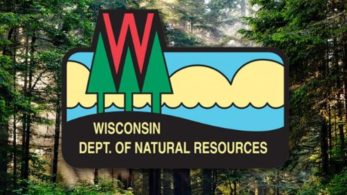Create habitat, volunteer to help bees and other pollinators during Pollinator Week June 17-23
Contact(s): Jay Watson, DNR insect ecologist, 920-662-5161 OR Eva Lewandowski, DNR citizen-based monitoring coordinator, 608-264-6057
MADISON – Wisconsin has 20 species of native bumble bees, and with many of these important pollinators in decline, creating habitat for them or helping monitor their populations are two of the most important steps concerned citizens can take for Pollinator Week this June 17-23.

Pollinators, including bees, are vital to creating and maintaining habitats and ecosystems.Photo credit: Jay Watson, DNR
“Our native pollinators are incredibly important to maintaining Wisconsin’s native ecosystems, many fruit crops, and backyard gardens, but they need our help,” says Jay Watson, the Department of Natural Resources’ insect ecologist.
“Creating healthy habitat for pollinators and getting trained to help identify and locate bumble bees, Karner blue butterflies, and monarch eggs and caterpillars are great ways to help.”
Gov. Tony Evers has joined governors from 48 other states to declare July 17-23 as “Pollinator Week.” A pollinator is any animal that visits flowering plants and transfers pollen from flower to flower, aiding plant reproduction. In Wisconsin, native pollinators include bees (Wisconsin has 400 species of them, including bumble bee species), butterflies, moths, flower flies, beetles, wasps, and hummingbirds. Populations of some pollinators in Wisconsin, including several bumble bees and butterflies, are in decline, with potential widespread implications.

Northern wildflower garden brings nature home
Globally, somewhere between 75 percent and 95 percent of all flowering plants – some 180,000 species in all and 1,200 crops — need pollinators to help reproduce, according to the Pollinator Partnership, the organizer of the awareness week.
In Wisconsin, many of these flowering plants and the insects that pollinate them feed other wildlife and support healthy ecosystems that clean the air and stabilize soils, Watson says.
Pollinators are crucial for many Wisconsin agricultural crops too. Without pollinators, Wisconsin cranberry growers would lose three-quarters of their crop, apple growers would lose 80 percent, and cherry growers would lose 60 percent. In 2015, that would have added up to a whopping $134 million loss, according to the Wisconsin Department of Agriculture, Trade and Consumer Protection. Concern over declines in pollinators led that department to initiate development of the Wisconsin Pollinator Protection Plan in 2015.
Feed pollinators and help find them
Good habitat for pollinators will include a diversity of native plants, leaf litter or “unmanicured” green spaces, and minimal to no pesticide use, Watson says.
“Even if you only have a small yard or an apartment balcony, you can grow native flowers that provide food for pollinators,” he says.
Lists of plants good for pollinators and other resources are found on DNR’s Saving Pollinators web page, found on dnr.wi.gov, search “pollinators.”
Volunteering with a citizen-based monitoring program to help pollinators is something that anyone can do, wherever they are in the state, says Eva Lewandowski, citizen-based monitoring coordinator at DNR.
“There are several pollinator projects in Wisconsin that people can join to help provide high quality data that can be used for conservation and management,” Lewandowski says. Those programs include:
- Wisconsin Bumble Bee Brigade, a new DNR effort to train citizen scientists to help identify and photograph bumble bees including the rusty patched bumble bee; Wisconsin is one of the strongholds for this federally endangered species. Slots were still available as of June 13 for a training session on July 2 in St. Croix Falls; people may also submit photos and other information of their bee sightings. Access information on both through the Get Involved tab.
- Wisconsin Karner Volunteer Monitoring Program, in which trained volunteers monitor for lupine, the native plant Karner blue butterflies feed on, and adult Karners. One of the remaining training dates for 2019 is June 22, 10 a.m. to noon at Sandhill Wildlife Area. People can also photograph and submit information about Karner blue butterflies they see while outdoors. See the Get Involved tab for more.
- The Monarch Larva Monitoring Project needs volunteers statewide to search patches of milkweed for monarch eggs and caterpillars. Learn more about how to get started monitoring milkweed near you.
